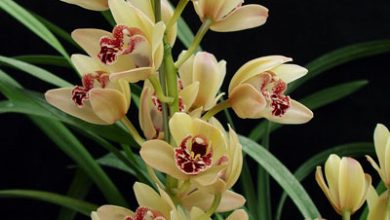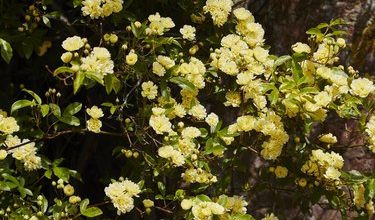Complete Guide to Learn to Plant Palm Trees [Step by Step]
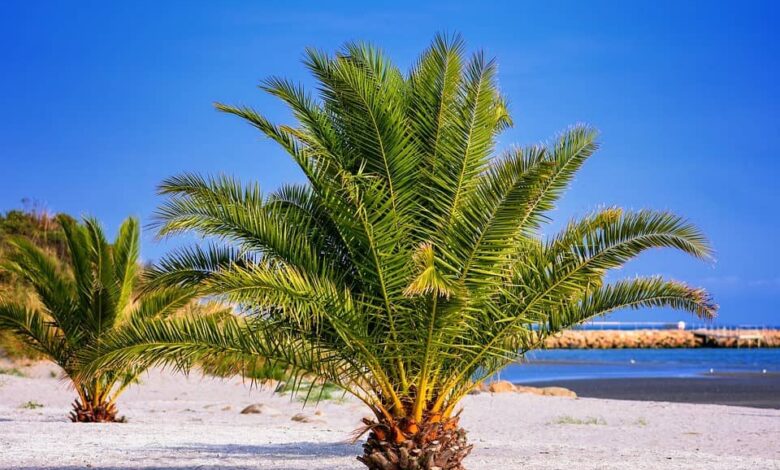
The Palm trees They are tropical plants of great size and popularity throughout the world.
There are varieties for outdoors , others that withstand the driest and arid climates , storms on the seashore and there are also those that prefer the peace of a home where they are understood, with simple care that will save diseases in the palm tree .
- When? They should be planted in spring or summer.
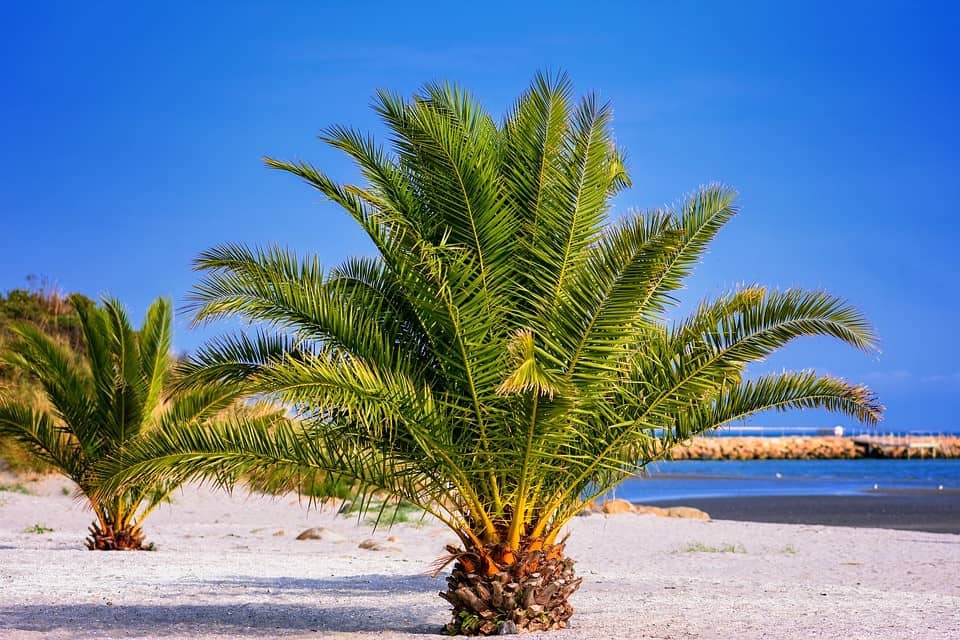
- Where to sow them? In hot or tropical climates, where they have direct sun.
- Ideal temperature? 25 ° C.
- How do we prepare the land? Well-drained, neutral and nutrient-rich soils are ideal.
- How do we water? Often just planted and very soon after.
- Plagues and diseases? They are very hardy but plague.
When to plant palm trees?
 The majority they are lovers of direct sunlight And if they are in privileged spaces in your home to highlight decorations , don’t forget that they also need plenty of natural light there.
The majority they are lovers of direct sunlight And if they are in privileged spaces in your home to highlight decorations , don’t forget that they also need plenty of natural light there.
It will be enough to keep it near a window and give it little watering so that it does not grow fungus or its roots rot. It will not demand anything more.
If you decided to buy it in a pot , the palm tree can actually be sown at any time of the year , but try to avoid doing it at the time of the coldest winter or the hottest summer.
But if you buy one that was recently dug out of the ground and comes with a root ball of soil attached to its roots, it should be planted in spring or summer , because palm trees need a high temperature for their roots to multiply.
Where to plant palm trees?
The Palm trees indisputably they prefer warm climates, The Mediterranean air suits them very well, with moderate frosts that they can withstand.
 They are very susceptible to temperature changes in winter and may withstand a frost , but two or more will inevitably affect their root activity and make them much more vulnerable to disease attacks.
They are very susceptible to temperature changes in winter and may withstand a frost , but two or more will inevitably affect their root activity and make them much more vulnerable to disease attacks.
That is why they are better adapted to temperate or hot climates . An ideal temperature is around 25 ° C.
A tropical landscape is hardly devoid of palm trees . But when we want to have a house, it helps to know which variety is best for us .
Generally speaking, there are palm trees with warm climates, capable of withstanding low temperatures ranging from -5 to -13 ° C.
And there is a great variety of species that vary in size (small, medium or large) and of hot or cold climates. Choose the one that suits you best and if you are going to have it planted in a pot, make sure that they do not sell you by mistake any of those that can grow up to 15 meters in height , please.
How do we prepare the land for growing palm trees?
In truth, although in general palm trees adapt to any type of soil , it is advisable to prevent the substrate from becoming saturated and to avoid excess lime.
How do we water the palm trees?
Up to two years of life, it is highly recommended to water the palm tree quite frequently , so that it can set well and develop fully . But afterward she will be able to sustain herself with little irrigation and rainwater.
We cannot forget that palm trees will tend to need more water if they live in a sandy soil , because it is much drier than a clay soil.
But roughly, the irrigation system is very simple and really nothing demanding. A young plant should be watered daily during the first weeks of its roots taking root, then it is spaced and watering will be weekly until it diminishes in adulthood.
How to plant palm trees step by step?
Planting a palm tree requires taking into account certain considerations that will help you lead a healthy life in our garden. So let’s see what we have to do.
- Dig a large and wide hole , covering the palm tree’s chaplain . It’s fine if you achieve these measurements: 15 cm wider on each side and another 15 cm longer than the length of the plant chaplain .
- The substrate that we prepare must be made up of the earth that we remove and organic fertilizer . Manure , peat, compost, or mulch are excellent.
- Sometimes filling the hole with washed construction sand makes the plant firmer and prevents it from propping up with the help of woods.
- You can also build a kind of earth barrier around the hole, with the idea of retaining water for the newly planted palm tree , in order to prevent the roots from hardening.
- When the palm tree is very large , it is necessary to create a support with ropes or props made of sticks placed diagonally, embedded in the ground and leaning or resting on the trunk, without damaging it.
- An effective technique to guarantee a healthy development of the palm is to wrap its leaves , keeping them tied for 6 months to a year , immediately after it is transplanted. This is done to prevent the leaves from falling off as it adjusts to its new environment.
- These leaves are released if we observe that the ends are sticking out of the wrapper . It means then that it has taken root and that we can now release it.
- After having planted it , it should not be fertilized between 6 to 8 weeks, because it can be stressed as it is in the process of adapting to the new environment that we assign it.
The most successful method of propagating palm trees is by seed , but it is also done by division of the bush; by suckers and air layering.
What favorable associations do they have?
There are many varieties of palm trees, depending on whether they are warm or rather cold.
Among the most popular are:
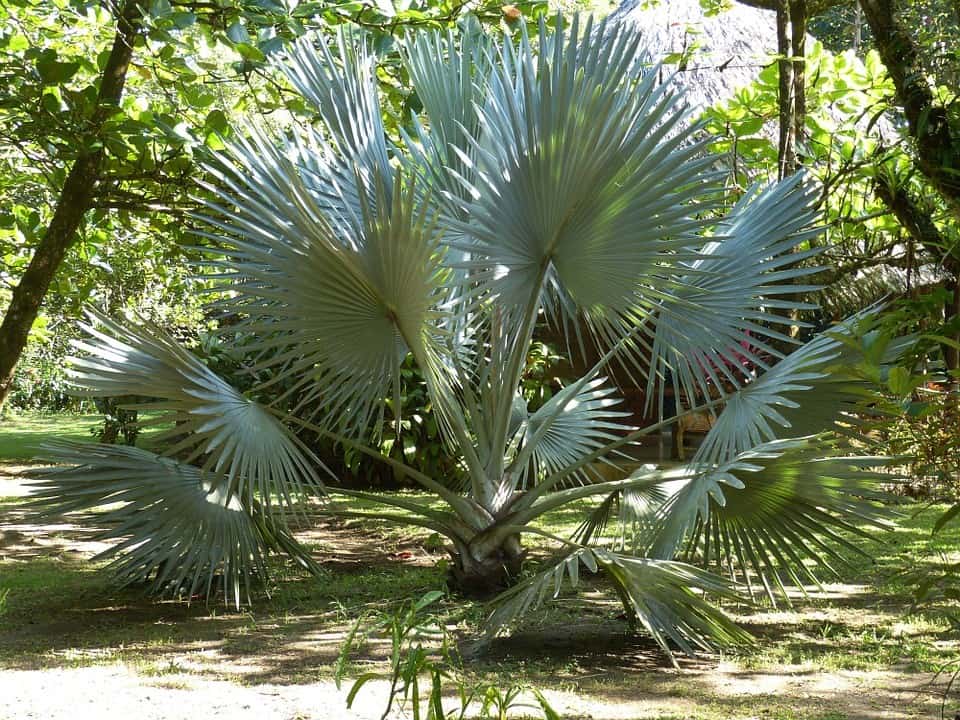 With the help of a gardener specialist, you can choose the palm tree that best suits your climate . For example, the popular Canary Island Palm is 100% Mediterranean.
With the help of a gardener specialist, you can choose the palm tree that best suits your climate . For example, the popular Canary Island Palm is 100% Mediterranean.
Palm trees in large gardens can form exotic combinations , serving as a background companion for flower crops .
It can really be incredible to combine , in the middle of a large garden , the Sago Palm, along with the Cycas Revoluta, native to southern Japan (also called the church palm or King sago) along with perennial multicolored flowers that surround them like peonies. white , red and yellow .
In Spain, for gardening, the Phoenix dactylifera is widely cultivated for large green spaces where it can reach its maximum splendor of about 20 meters in height and a trunk with a diameter of about 30 to 50 cm. It is seen a lot in coastal locations such as the Valencian city of Alicante.
Another fabulous arrangement is to plant at the foot of a Sago Palm in a garden or pot, many begoñas or the perennial Flox Paniculada.
Or combine in beach gardens Coconut Palm Trees and Beach Grapes, where the former add height and elegance and the latter smell and texture thanks to the purple color acquired by its rounded leaves and flowers and grape clusters that provide a wonderful visual festival.
The Canarian palm tree is very well associated with bonfires, banana trees and even with laurel . Even with eucalyptus it gets along very well. But it should never be planted near pomegranates , lemon trees , orange trees , olive trees and artichokes.
What pests and diseases affect palm trees?
The red palm weevil can pierce the trunks of coconut and palm trees , breaking through in lengths of up to one meter that spreads very easily.
It takes advantage of the wounds that pruning leaves in the leaves and trunk and is embedded there to advance in its destructive path.
The first symptom of illness It is the yellowish color of the palm leaves.
The treatment to be followed includes foliar sprays and injections or endotherapy , by means of plant surgery, eliminating parts that have been damaged or that have been rotted by the action of the animal.
And you should also apply preventive treatment with sprays throughout the year. This beetle is very persistent in the hot season, which is when it becomes most virulent.

![Photo of Heather Pests and Diseases: [Detection, Causes and Solutions]](https://www.complete-gardening.com/wp-content/uploads/2022/08/heather-pests-and-diseases-detection-causes-and-solutions-390x220.jpg)
![Photo of Olive Tree Diseases: [Characteristics, Types, Detection and Treatment]](https://www.complete-gardening.com/wp-content/uploads/2021/06/Cuales-son-las-enfermedades-del-olivo-y-como-podemos-detectarlas-390x220.jpg)
